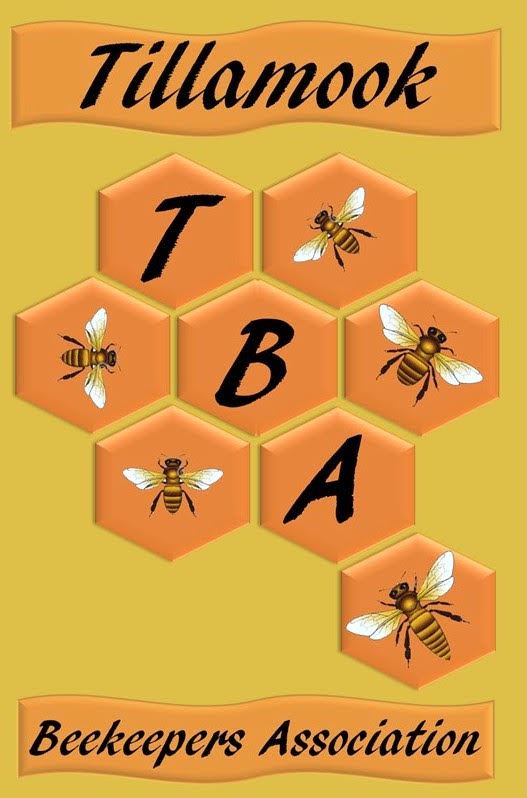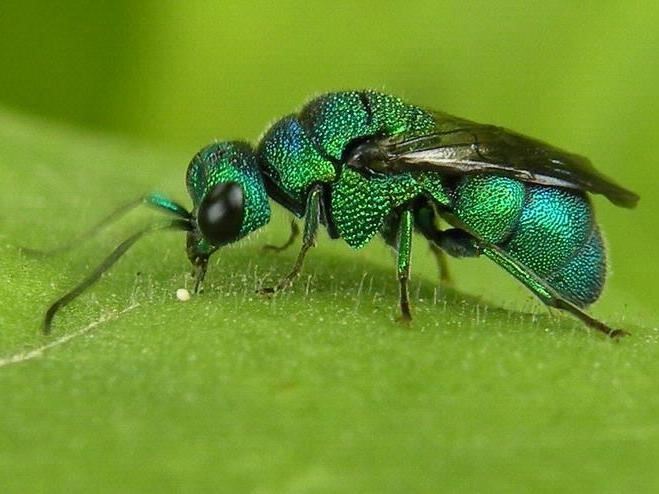About Bees
Not everyone knows how to identify a bee? Not everything with wings that buzzes is a bee.
To understand what a bee is, it is helpful to first know what is not a bee.
A yellowjacket hover fly (Milesia virginensis) is NOT a bee.
|
A baldfaced hornet (Dolivhovespula maculate) All of these are NOT bees, in fact they are nasty enemies to you and to the honey bee. |
A cuckoo or emerald wasp (Chrysididae) is NOT a bee.
|
The Honey Bee on the other hand is a wonderful creature
Honey bees are found on every continent on earth, except for Antarctica.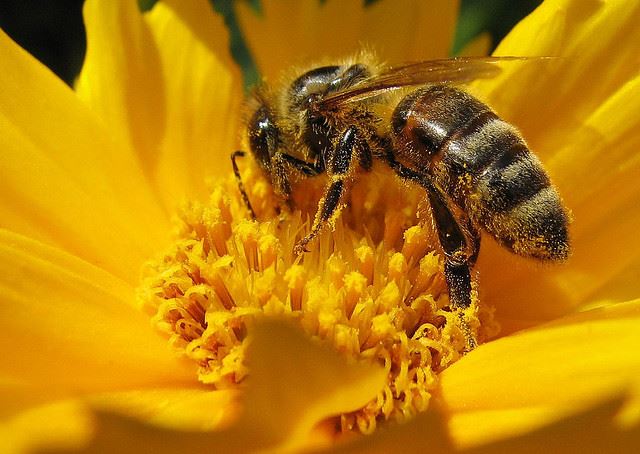 Bees of all varieties live on nectar and pollen. It is estimated that one-third of the human food supply depends on insect pollination. Bees do 80% of the work of all pollinators. Bees have a long, straw-like tongue called a proboscis that allows them to drink the nectar from deep within blossoms. Bees are also equipped with two wings, two antennae, and three segmented body parts (the head, the thorax, and the abdomen). Honeybees are social insects that live in colonies. The hive population consists of a single queen, a few hundred drones, and thousands of worker bees.
Bees of all varieties live on nectar and pollen. It is estimated that one-third of the human food supply depends on insect pollination. Bees do 80% of the work of all pollinators. Bees have a long, straw-like tongue called a proboscis that allows them to drink the nectar from deep within blossoms. Bees are also equipped with two wings, two antennae, and three segmented body parts (the head, the thorax, and the abdomen). Honeybees are social insects that live in colonies. The hive population consists of a single queen, a few hundred drones, and thousands of worker bees.
Honey bees forage for nectar and pollen from flowering plants. They use the nectar collected to create our favorite sweet treat, honey! When carrying the nectar back to the hive, their bodies break down the complex sucrose of the nectar into two simple sugars, fructose and glucose. Tucking it neatly into a honeycomb cell, the bees will then beat their wings furiously over top of this syrupy sweet liquid to fan out the moisture and thicken the substance. When it is complete, the bees will cap that cell with beeswax, sealing the perfected honey for consumption later.
Worker Bees
Worker bees are the most familiar of the honey bee hive, as they make up about 99% of each colony's population, and the ones that we see flying around our gardens and groves.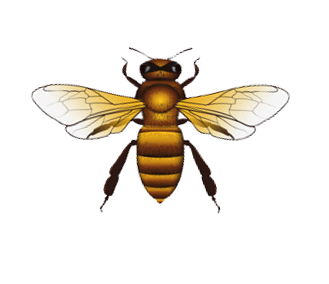
Worker bees are all female, and they do almost everything for the hive. From birth to her death about 45 days later, the worker bee is given different tasks to do during different stages of her life. Worker bees are responsible for everything from feeding the larvae (the baby bees), to tending to the queen, to cleaning the hive, to collecting food, to guarding the colony, to building honeycomb.
The stinger of the worker bee is barbed, so when she is forced to defend herself or the hive, her stinger will become stuck in the skin of her victim. She is unable to pull it out and dies when she inevitably tears herself away from the stuck stinger, leaving it behind with the venom sack still pumping venom into her victim. Consequently, honeybees are very gentle and they don't want to die any more than you want to be stung. Be nice to them, and they'll be nice to you.
Drones

Male bees are called drones. Drones are slightly longer and wider in girth than the worker bee. You can identify drones in the hive by their big round bodies and large eyes. Drones are incapable of stinging.The job of a drone is to mate with queens from other hives. If they do get the opportunity to mate, they die immediately afterwards. If they do not mate, they can live up to 90 days (that's twice the live of a worker bee!)
The Queen Bee
There is one queen bee per hive - she is the mother of all the other bees. She is much longer than the worker bee or drone, and has shorter wings. She is the only fertile member of the colony, and lays about 1,500 eggs a day during spring and summer.
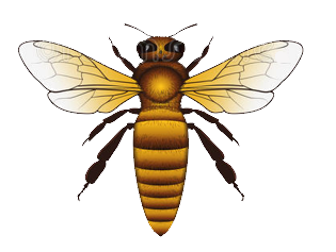
Queen bees are distinguished from the other members of the hive by their long abdomens and small wings. Soon after birth, queen bees will go out and have a wild weekend, where they mate with 15 or more drones over a three-day period before retiring to the hive to lay eggs. The queen will not leave the hive again unless the colony swarms.
When the colony needs a new queen bee, they simply choose a healthy larva, hatched from an egg of the current queen, and feed it royal jelly, a special, super-nutritious food. Royal jelly, produced in the heads of young nurse bees (worker bees whose job it is to care for the larvae), helps this larva grow into a queen. Queens can lay about 1,500 eggs per day and can live from 4 to 7 years, that's up to 57 times longer than a worker bee.
Life in the Hive
 Honey bees do not build an external structure that contains their hive. They love to live in hollow spaces, whether that means a hollow tree, an empty fallen log, or in a traditional man-made bee hive.
Honey bees do not build an external structure that contains their hive. They love to live in hollow spaces, whether that means a hollow tree, an empty fallen log, or in a traditional man-made bee hive.
They do, however, build the inside of their hive. Honeybees make their own special wax (beeswax), which they use to create perfect little hexagons inside their home. These little cubbyholes are called cells, and in them, the bees store everything from eggs, to pollen, to honey.
To seal their hive and to protect against diseases, the bees make a substance called propolis. Propolis is a combination of beeswax, honey, and tree resins, and is anti-bacterial, anti-fungal, and anti-viral. It disinfects and protects the hive. It is also very sticky, and honeybees love to use it to seal up any cracks or holes they may encounter on a housekeeping mission.
With such a large population all working together, some great communication skills are needed. Bees do their talking in two ways - by scent and by dancing. When a honey bee is warning her sisters about an intruder, or if all the ladies in the hive are particularly happy, honeybees can release a special hormonal scent called pheromones. The bees can detect these scents and interpret their message. A happy bee pheromone smells suspiciously like lemons, and a warning-smell has a banana-like scent.
When a forager bee needs to alert her sisters as to where a nectar source is, dancing comes in handy. She does special turns and wiggles to show where she found the food.
Search Website:
Please support our loyal Sponsors! Visit their website by clicking on their logos, or simply visit their businesses and thank them for their support of: Tillamook Beekeepers Association. |
